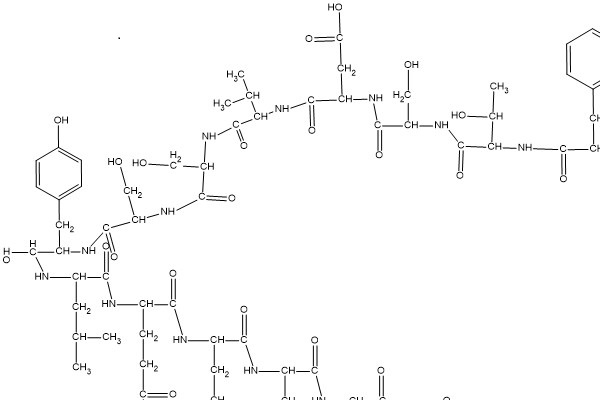TRULICITY is a human glucagon-like peptide-1 (GLP-1) receptor inhibitor. The main component of trulicity is dulaglutide, a fusion protein with a single molecular structure consisting of two identical polypeptide chains bonded by a disulfide bond. Each peptide chain is covalently linked with a decorated human IgG4 heavy chain Fc segment by a small linker peptide, which is composed of an N-terminal GLP-1 analogue coding sequence and produced in somatic cells of the hamster ovary. The GLP-1 analogue coding sequence of dulaglutide is 90% identical to the coding sequence of pure human GLP-1, with a structural decoration introduced in the part of GLP-1 that is responsible for the interaction with dipeptidyl peptidase IV. In addition, Potential T cell epitopes and the part of IgG4 that is responsible for fusion with high-affinity Fc receptors and hapten production were also decorated, and the total molecular mass was about 63kDa.
Dulaglutide (Trulicity), a highly effective once-weekly intradermal GLP-1 analogue developed by Eli Lilly Products, was approved for the treatment of type 2 diabetes in the United Kingdom in September 2014. Structurally, the Gly at the eight position of the GLP-1 (7-37) chain was replaced by Ala, the Glu at the 22 position was replaced by Gly, and the Gly at the 36 position was replaced by Arg. The average half-life of the microbial drug was 90 hours. In March 2014, clinical medicine results showed that the efficacy of dulaglutide was noninferior to liraglutide, which was the first biomacromolecule GLP-1 analogue that was noninferior to liraglutide. However, the frequency of dulaglutide once a week can greatly improve the compliance of patients, and it is a new product with great development potential to compete with lira Chemicalbook lutide in the market.

GLP analogues include GLP-1 analogues and GLP-2 analogues. GLP-1 analogues are mainly used in type 2 diabetes. Currently marketed GLP-1 analogues include esenatide, liraglutide, lixisenatide, dulaglutide and apillutide. GLP-2 analogues are used in short bowel syndrome, and currently only tidulutide is available. GLP-1 analogues are a popular active polypeptide industry in scientific research at present. The peptide chain length is based on 31 to 44 carbohydrates, and there is no disulfide bond in the structure. At present, the best-selling types of GLP-1 analogues are mainly liraglutide and esenatide, and the total sales of the two have exceeded 3 billion US dollars. Some investment analysts estimate that the sales market of GLP-1 analogues may increase by 6 billion US dollars in five years.
Post time: Nov-29-2024
